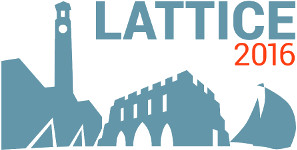Speaker
Dr
Bjoern Wellegehausen
(ITP University Giessen)
Description
Theoretical knowlegde about the nonperturbative aspects of the phase diagram of QCD is of utmost
importance for the design of future collider experiments or the understanding of cold and dense neutron stars.
Since lattice QCD suffers from a severe sign problem at finite density, QCD-like theories are useful to understand the phase diagram
of baryonic matter at finite density. Most QCD-like theories (two-color QCD, $G_2$-QCD or adjoint QCD) contain bosonic baryons, for example diquarks, or other more exotic types of matter.
It is important to understand the interactions of these particles with ordinary fermionic baryons present in QCD.
Simulations of these theories, for instance $G_2$-QCD, reveal an interesting and rich phase diagram at zero temperature. Many open questions arise, partly due to the lack of high precision or large volume/continuum data. This is the reason why we study two-dimensional QCD-like theories. In the talk we shall discuss
differences between QCD-like theories at baryon chemical and isospin chemical potential. Furthermore we present simulation results on the phase diagram and spectroscopy at finite density for $G_2$- and two-color-QCD and compare it to free lattice fermions. Finally we give an outlook to our ongoing simulations in four dimensions.
Authors
Prof.
Andreas Wipf
(TPI University Jena)
Dr
Bjoern Wellegehausen
(ITP University Giessen)
Prof.
Lorenz von Smekal
(Justus-Liebig University Giessen)

